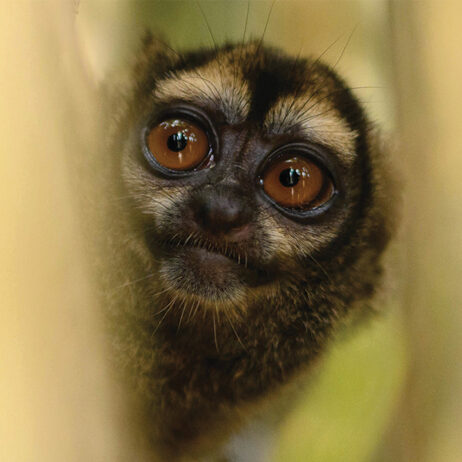
Detailed photos showing the new species of beetle discovered in Fundación EcoMinga's (EcoMinga's) Candelaria and Rio Machay Reserves in the Tungurahua province of Ecuador. Image taken from Yarina Tapuy-Avilés et al., (2025). Credit: Yarina Tapuy-Avilés et al.
A major scientific discovery has emerged from the forests of Ecuador: twelve new species of Bibrax beetles have been described – a dramatic expansion of a genus that, until recently, was believed to contain just two known species: Bibrax bradleyi from Panama and Bibrax popeye from Colombia.
Among these newly identified species is Bibrax canelazo, found in two of the cloud forest reserves protected and managed by our conservation partner, Fundación EcoMinga (EcoMinga).
Unlike many insects documented through light-trapping surveys, these beetles were discovered through carefully sifting leaf litter from the forest floor using an 8-mm sieve. The resulting specimens were analysed using DNA barcoding and physical characteristics, revealing features distinct enough to confirm entirely new species.
A genus much richer than once believed
This research significantly expands both the diversity and geographic range of this genus. Originally known from only lowland forests in Panama and Colombia, we know that Bibrax actually exists much farther south and in a greater range of habitats, from coastal forests to Andean cloud forests over 2,500 metres above sea level.

Cerro Candelaria: a vast mountainous region with an exceptional diversity of wildlife and many species still unknown to science. This is one of the two new locations in the Río Pastaza watershed where Bilbrax canelazo was found. Credit: Juan Pablo-Reyes/EcoMinga
The genus is particularly notable for its striking sexual dimorphism. In many species, males have large, fully developed eyes, while females have much smaller, reduced eyes. Interestingly, species with reduced eyes are almost always wingless.
Bibrax canelazo: A new species from protected forests
The newly described Bibrax canelazo comes from the Candelaria and Río Machay Reserves on either side of the Río Pastaza valley – part of the extraordinary Llanganates–Sangay corridor protected by our partner EcoMinga.
The species name pays tribute to canelazo, a traditional alcoholic hot drink consumed in the Andean highlands and especially enjoyed during Ecuador’s Fiesta de Quito. The name also echoes its home in EcoMinga’s Candelaria Reserve.

This map shows the distribution of sites in which the new Bibrax species were found. These locations range from low to high altitude and extend the genus’ range much farther south than previously known. Image taken from Yarina Tapuy-Avilés et al., (2025). Credit: Yarina Tapuy-Avilés et al.
The story these beetles tell
Many of the newly identified species are known from only a single location, which suggests that:
- Vast numbers of species remain undescribed
- Many may have extremely small ranges
- Their survival depends on the continued protection of intact forests
Help protect the unknown
The discovery of Bibrax canelazo is a powerful reminder that the world remains full of undiscovered life. By supporting the protection of forests like those managed by EcoMinga, we safeguard not only the species we already know, but also the countless others still hidden in the leaf litter, canopy, and soil.
Act now to protect the world’s most threatened habitats and species.


